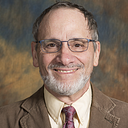Mendel Letters 87 — High Bridge Library in the Bronx
July 23, 2022
Dear Mendel,
We never had books in the house, but Mommy took me to the High Bridge Library on West 168th Street to get a library card as soon as I could write my name. I think I was four when I got my first library card. On at least one occasion I remembering running away and staying at the library until they kicked me out and sent me home.
In the 1950s, while in second, third and fourth grades at PS 104 in the Bronx, I gobbled up Bobbs-Merrill’s Childhood of Famous Americans biographies that I took out of the library. Our second grade teacher had a chart where we listed all the books we read and I was racing with a girl named Adrienne to lead the class. The Famous American biographies included both boys and girls; I confess I was mostly interested in the boys and selected them if they were available. I also loved Hardy Boys detective mysteries. My nemesis Adrienne was devouring Nancy Drew.
Childhood of Famous Americans were patriotic histories and I wanted to be just like the young heroes in the books. But the stories were fairy tale versions of the past. Just because I liked reading them doesn’t mean they were any good and definitely does not mean I learned anything useful about the history of the United States. If anything, the false images created by the fairy tales took me years to unlearn as I better appreciated what the history of the United States really was.
Bobbs-Merrill, based in Indianapolis, Indiana, started publishing the Childhood of Famous Americans series in 1932 mixing fact and fiction with imagined dialogue. Its first youthful hero was young Abe Lincoln.
My favorite part of the books was when the hero faced a challenge or viewed something disturbing and swore that when they grew up he or she would right wrongs and solve problems. I waited for my opportunity to discover my youthful challenge and dreamed I would do something heroic so they would include my biography in the series.
One of the principle authors for the series was Augusta Stevenson, a teacher and author of children’s books. Stevenson wrote the biographies Abe Lincoln, Frontier Boy (1932); Clara Barton: Girl Nurse (1936); George Washington, Boy Leader (1942); Daniel Boone, Boy Hunter (1943); George Carver: Boy Scientist (1944); Sam Houston: Boy Chieftain (1944); Kit Carson, Boy Trapper (1950); Booker T. Washington, Ambitious Boy (1950); Andy Jackson, Boy Solider (1952); Molly Pitcher, Girl Patriot (1952); Ben Franklin, Printer’s Boy (1953); and Tecumseh, Shawnee Boy (1953).
Andy Jackson, Boy Solider, eventually became President of the United States. But before becoming President, Andrew Jackson was a slaveholder in Tennessee and led an invasion of Florida that targeted Seminole Indians and enslaved Africans who had escaped to freedom. As President, Jackson defied a Supreme Court order defending Cherokee property rights in Georgia and was responsible for the Trail of Tears, the expulsion of Native Americans from the Southeast to make room for expanded cotton production and slavery.
Books on the childhoods of Confederate heroes were written by other authors, Robert E. Lee: Boy of Old Virginia by Helen Albee Monsell (1937) and Bedford Forrest, Boy on Horseback by Aileen W. Parker (1952). Both Lee and Forrest were in command of Confederate troops that massacred African American soldiers in the United States Army who had already surrendered, Lee after the Battle of Crater (Virginia) in July 1864 and Forrest at Fort Pillow (Tennessee) in March 1864. Forrest, whose bust was recently removed from the Tennessee state house, was a founder of the Ku Klux Klan.
The biography of George Carver, boy scientist, mentioned slavery, but in the biography of George Washington, “field hands” load hogshead of tobacco on ships bound for England (2) and we learn that on his father’s plantation, there was a “prey, shady little street, with little shops and little houses on each side and close together. There were shops for carpenters, coopers, tanners, shoemakers, blacksmiths, and other workmen. There were little houses for smoking hams, salting pork, making candles, spinning, weaving, cooking, washing, sewing, knitting, and a dozen other things” (11–12). In George Washington’s plantation childhood there were no enslaved people and apparently no Black people.
New books continued to be added to the series after 1960, but I was already in 5th grade and too old for the series. Harriet Tubman, Freedom Girl and Frederick Douglass, Boy Champion of Human Rights appeared in 1969.
For those that believe that teaching “patriotic” history will inoculate children against critical thinking about the past and present, I’m sorry, but it doesn’t work. In high school in the 1960s my generation had to come to terms with watching racial injustice and the war in Vietnam on television. My “youthful challenge,” which I suspect will never appear in the Childhood of Famous Americans series, has been to research, write, teach, and organize against racism, injustice, and imperialism, whether practiced by the United States or another country.
Your son
Hard copies of these typed letters were discovered in an old camp trunk in the basement storage facility of one of the few buildings that remain standing in this Brooklyn neighborhood. The building is quite decrepit and is scheduled for demolition. The letters were found in November 2048 by a teenager who believes they were written by his great-grandfather. The letters are addressed to Mendel, the letter writer’s father, who appears to have been dead for at least six years when his son, whose name we are unsure of, started to write him. The son appears very agitated in some of the letters. With permission from the family, we are publishing them on the date they were written, only 28 years later.
Follow Alan Singer on twitter at https://twitter.com/AlanJSinger1
